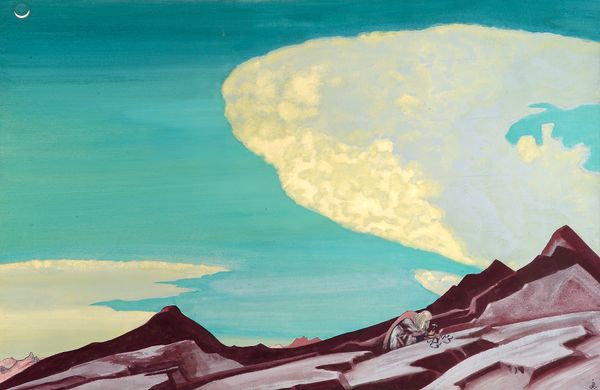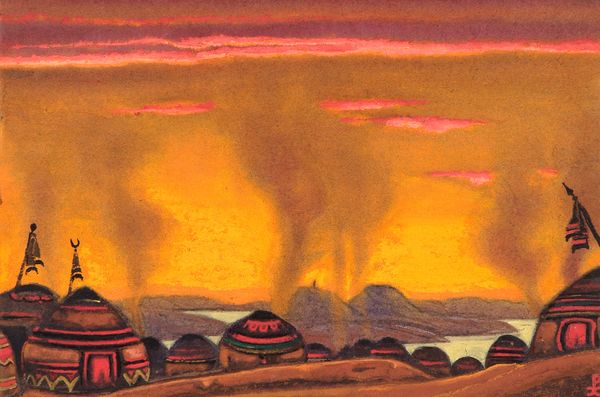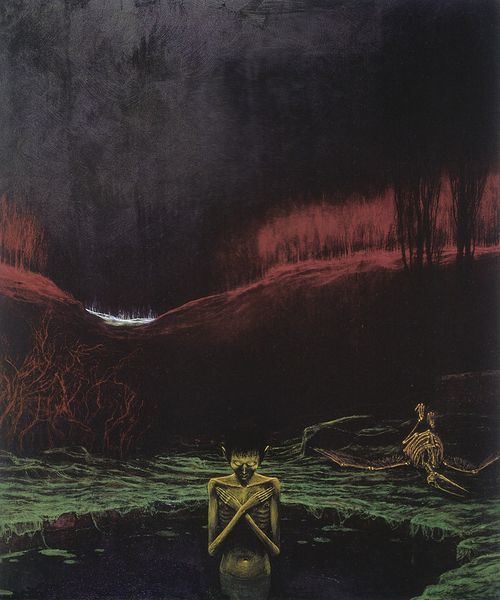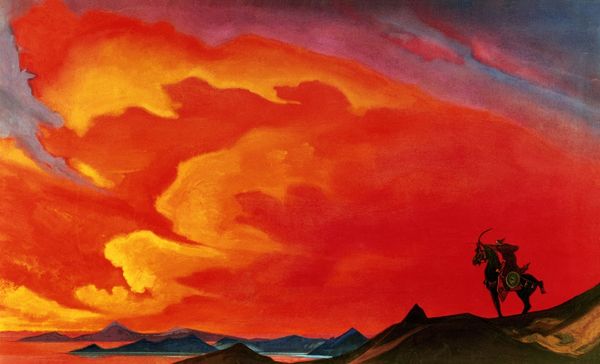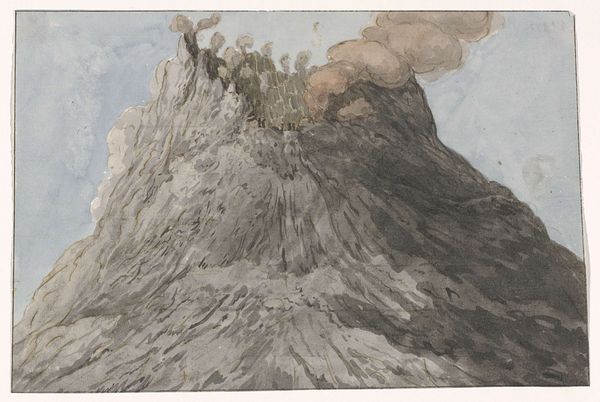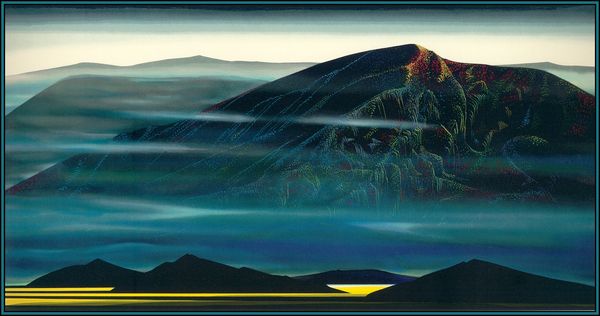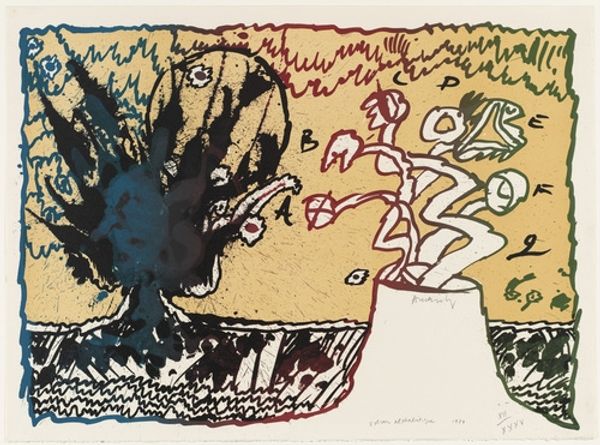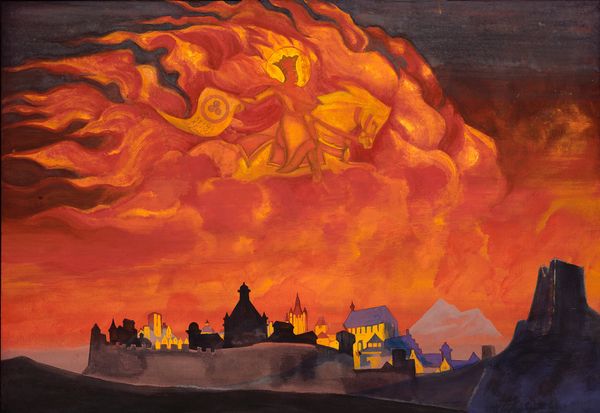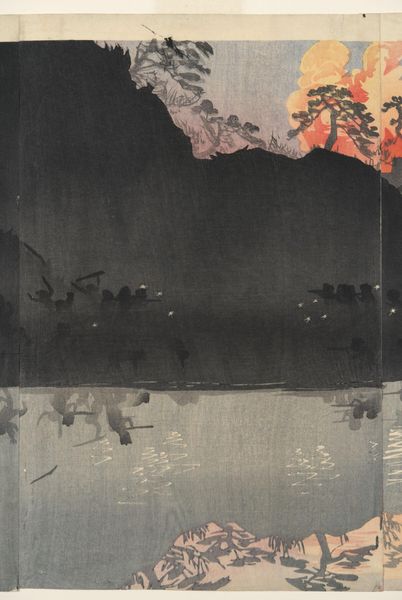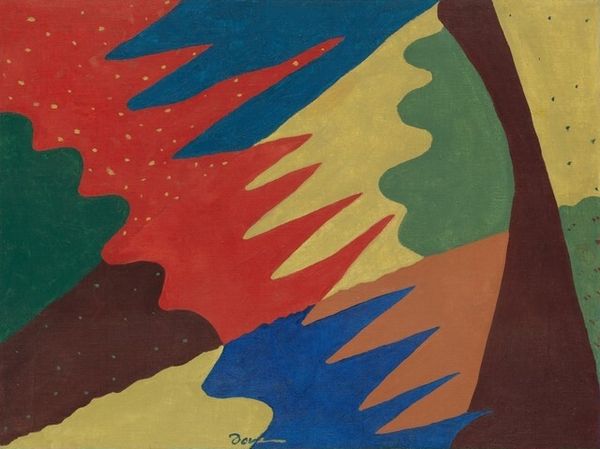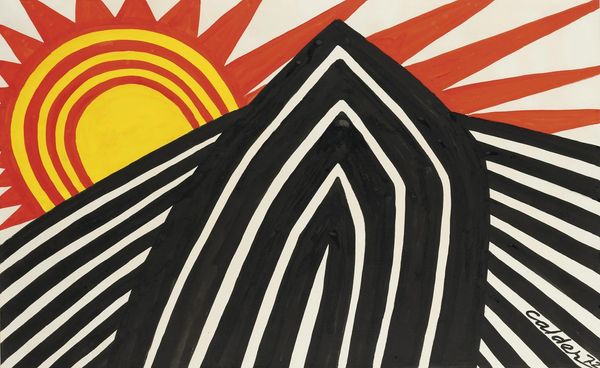
Copyright: Modern Artists: Artvee
Editor: So this is Andy Warhol’s "Vesuvius," a screenprint from 1985. It's so... loud. Not in a bad way, but that bright orange plume just grabs your attention. What strikes you about this piece? Curator: Loud is perfect! I think Warhol latched onto the primal drama of Vesuvius – the sheer power of nature. That screaming orange against the brooding mountain, the lurid green... It’s like Pompeii reimagined through a Pop Art filter, don’t you think? It makes me wonder, was he thinking about sudden fame and fleeting destruction? It certainly feels like something of a dramatic statement from him. Editor: Definitely. There's a kind of immediacy to it, despite the subject being something that happened centuries ago. Did he ever visit Vesuvius, or Pompeii for that matter? Curator: He did actually. He traveled to Naples, commissioned to do this very series by a gallery owner there, and he saw Vesuvius for himself. Funny, isn't it, that a volcano became this ultimate Warholian subject? Something natural, iconic, yet utterly reproducible. And that explosion? That's the most Andy moment of all. A celebration and a warning at once. Editor: It really does put the ‘Pop’ in Pop Art! I hadn't considered the reproducibility aspect, but it makes perfect sense for Warhol. I guess I walked into that. Curator: Happens to us all, I mean, wasn’t he, himself, endlessly reproducible in the media? But yes, Vesuvius here also reminds us how explosive, and quickly gone, ‘pop’ fame can be. So I think what Warhol shows us in Vesuvius is less nature, more the enduring nature of an image, both the volcano, and his. Editor: That’s a great way to look at it. I'm definitely seeing more than just bright colors now.
Comments
No comments
Be the first to comment and join the conversation on the ultimate creative platform.
